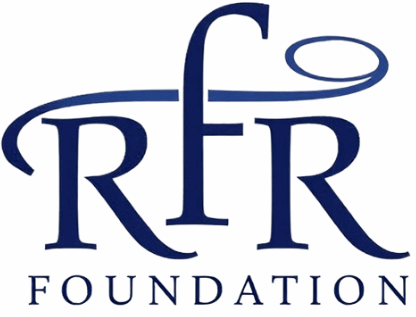In 2025, fully funded scholarships have become highly competitive, yet widely accessible to students around the globe. One common barrier for many applicants is the requirement of English language proficiency tests, such as IELTS or TOEFL. Fortunately, several scholarships now waive this requirement, allowing students to apply based on academic merit, achievements, and other eligibility criteria. This article provides a step-by-step guide on how to find and apply for fully funded scholarships without IELTS, along with key strategies, documents, and reliable scholarship sources.
Understanding Fully Funded Scholarships Without IELTS
Fully funded scholarships cover tuition fees, living expenses, health insurance, travel costs, and sometimes even research or study materials. Scholarships without IELTS are designed for students who:
- Have studied in English-medium institutions
- Possess alternative English proficiency proofs
- Meet other scholarship-specific academic or professional criteria
These scholarships aim to promote global education opportunities and attract talented students regardless of standardized test scores.
Steps to Apply for Fully Funded Scholarships Without IELTS
1. Research Scholarship Opportunities
The first step is identifying scholarships that do not require IELTS. Use trusted portals, university websites, and government programs to locate such opportunities. Some notable sources include:
- DAAD Scholarships (Germany) – Offers programs with English proficiency exemption under certain conditions.
- Erasmus Mundus Scholarships (Europe) – Accepts students with prior English-medium education.
- University-specific scholarships – Some universities waive IELTS if previous education was in English.
2. Check Alternative English Proficiency Options
Even if IELTS is not required, many scholarships expect proof of English proficiency. Alternatives include:
- Academic transcripts from English-medium schools
- Certificates of prior English-language courses
- TOEFL/other test scores (optional in some cases)
- Interviews conducted in English
Ensure that the scholarship guidelines clearly accept these alternatives before applying.
3. Prepare Essential Documents
Most fully funded scholarships require a comprehensive set of documents. These typically include:
- Academic transcripts and degree certificates
- Curriculum Vitae (CV) or resume
- Statement of Purpose (SOP) or motivation letter
- Letters of recommendation from professors or employers
- Passport and identity documents
- Certificates of achievements, awards, or extracurricular involvement
Organizing these documents in advance helps streamline the application process and ensures timely submission.
4. Craft a Strong Statement of Purpose (SOP)
The SOP is a critical document in applications without IELTS. It should:
- Highlight academic and professional achievements
- Explain motivation for studying abroad
- Demonstrate English proficiency through clear, structured writing
- Align your goals with the scholarship’s objectives
A well-written SOP can compensate for the absence of standardized language test scores.
5. Apply Through Official Channels
Submit applications only through official university or scholarship portals. Follow instructions carefully regarding:
- Document format (PDF or scanned copies)
- Word limits for essays and SOPs
- Deadlines for submission
Avoid third-party websites that may charge fees or provide unreliable services.
6. Prepare for Interviews
Some scholarships may conduct interviews to assess language proficiency and motivation. To succeed:
- Practice common interview questions in English
- Familiarize yourself with your SOP and achievements
- Demonstrate confidence and clear communication
Strong interview performance can significantly enhance your chances of selection.
Tips for Success
- Start Early: Begin searching at least 12 months before the intended start of your program.
- Focus on Merit: Highlight academic excellence, research experience, and leadership qualities.
- Apply Widely: Don’t rely on a single scholarship; multiple applications increase chances.
- Seek Guidance: Consult mentors, teachers, or educational consultants for document review.
- Highlight English Skills: Even without IELTS, demonstrate English proficiency through writing, interviews, and prior education.
Overview Table
| Scholarship / Program | Country / Region | Eligibility Criteria | Benefits | Notes |
|---|---|---|---|---|
| DAAD Scholarships | Germany | Bachelor’s/Master’s, English-medium education | Tuition, living expenses, travel | IELTS waiver possible for some programs |
| Erasmus Mundus Scholarships | Europe | Academic excellence, prior English education | Tuition, living costs, travel | English test optional for qualifying students |
| University of Oslo Scholarships | Norway | Bachelor’s/Master’s, academic merit | Full tuition, living stipend | English proficiency can be demonstrated through prior education |
| University of Sydney Scholarships | Australia | Academic merit, leadership qualities | Tuition, living allowance | IELTS may be waived if prior degree was in English |
| MEXT Scholarships | Japan | Academic performance, age limits | Tuition, living expenses, travel | English test waiver for certain applicants |
| Commonwealth Scholarships | UK | Academic and leadership excellence | Tuition, living costs, airfare | IELTS may be waived under specific conditions |
FAQs
1. Can I apply for fully funded scholarships abroad without IELTS?
Yes, many scholarships waive IELTS if you have prior English-medium education or meet alternative language requirements.
2. What documents are most important for scholarships without IELTS?
Academic transcripts, SOP, recommendation letters, and proof of English proficiency are essential.
3. Are interviews mandatory for scholarships without IELTS?
Not always, but some programs conduct interviews to assess English skills and motivation.
